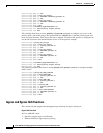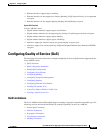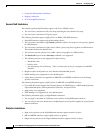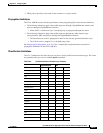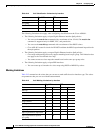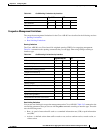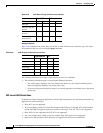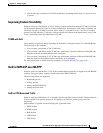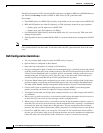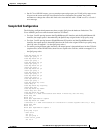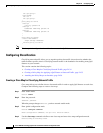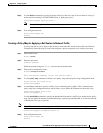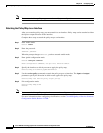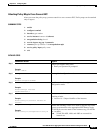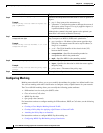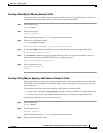
24-32
Cisco ASR 901 Series Aggregation Services Router Software Configuration Guide
OL-23826-09
Chapter 24 Configuring QoS
Configuring Quality of Service (QoS)
The QoS configuration for CPU generated traffic is the same as of QoS for MPLS over MLPPP. However,
you should use class-map to match on DSCP or EXP values of CPU generated traffic.
For example:
• If the OSPF packets use DSCP CS6, the policy-map should use the class-map to match DSCP CS6.
• BGP and LDP packets use either IP Adjacency or TAG Adjacency (depends on type of packets)
–
Packets going over IP Adjacency use DSCP CS6
–
Packets going over TAG Adjacency use EXP 6
• For ICMP packets (PING traffic), the default DSCP value is 0; you can specify TOS value while
sending the ping traffic.
• If IS-IS packets do not have either DSCP or EXP; it is treated with the policy configuration of DSCP
CS6.
Note The show policy-map interface multilink bundle-number command shows the combined counters of
CPU generated traffic and data traffic, if both data traffic and CPU generated traffic flow in the same
class.
QoS Configuration Guidelines
• You can configure QoS on physical ports and EFPs (only in ingress).
• QoS can likely be configured on Port-channel.
• Only table-map configuration is allowed on SVI interfaces.
• On a port configured for QoS, all traffic received through the port is classified, policed, and marked
according to the input policy map attached to the port. On an EFP configured for QoS, traffic in all
VLANs received through the port is classified, policed, and marked according to the policy map
attached to the port. If a per-port, per-VLAN policy map is attached, traffic on the trunk port is
classified, policed, and marked for the VLANs specified in the class filter.
• If you have EtherChannel ports configured on your router, you must configure QoS classification,
policing, mapping, and queuing on the individual physical ports that comprise the EtherChannel.
You must decide whether the QoS configuration should match on all ports in the EtherChannel.
• Control traffic (such as spanning-tree bridge protocol data units [BPDUs] and routing update
packets) received by the router are subject to all ingress QoS processing.
• You might lose data when you change queue settings; therefore, try to make changes when traffic is
at a minimum.
• When you try to attach a new policy to an interface and this brings the number of policer instances
to more than 255, you receive an error message, and the configuration fails.
• When you try to attach new policy to an interface and this brings the number of policer profiles to
more than 254, you receive an error message, and the configuration fails. A profile is a combination
of commit rate, peak rate, commit burst, and peak burst. You can attach one profile to multiple
instances, but if one of these characteristics differs, the policer is considered to have a new profile.
• On all Cisco ASR 901 routers, you can specify 128 unique VLAN classification criteria within a
per-port, per-VLAN policy-map, across all ports on the router. Any policy attachment or change that
causes this limit to be exceeded fails with a VLAN label resources exceeded error message.



